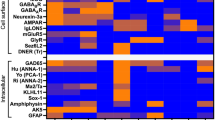Study aim. To investigate immunological parameters at the early stages of development of juvenile schizophrenia. Materials and methods. Immunological profiles were determined in patients aged 16–25 years receiving in-patient treatment. Patients were divided into two groups. Group 1 consisted of 39 patients with psychopathological symptomatology at the non-psychotic level (prodrome group) and group 2 consisted of 38 patients with first onset of endogenous psychosis (psychosis group). Immunological parameters included phagocytic activity, lymphocyte natural killer cytotoxic activity, production of interleukins IL-1, IL-4, IL-10, and interferon γ, and circulating immune complex (CIC) levels. These investigations were performed before and after treatment. Results. The experiments reported here showed that changes in immune system function were seen in patients at the earliest stages of disease development, with activation of proinflammatory and anti-inflammatory interleukins, decreases in phagocytic index and natural killer lymphocyte cytotoxic activity, and phagocytic number. Development of psychosis was associated with persistence of the high level of IL-10 production, the decreased level of natural killer cytotoxic activity, and the decreased phagocytic index, with accumulation of CIC. Conclusions. The authors recommend the use of not only psychotropic, but also immunomodulatory agents at the early stage of the development of endogenous psychosis.
Similar content being viewed by others
References
S. Zalcman, J. M. Green-Johnson, L. Murray, et al., “Cytokine-specific central monoamine alterations induced by interleukin-1, -2 and -6,” Brain Res., 643, No. 1–2, 40–49 (1994).
C. Fleischhaker, E. Schulz, K. Tepper, et al., “Long-term course of adolescent schizophrenia,” Schizophr. Bull., 31, 769–780 (2005).
A. Lobel, J. Liberman, D. Mayerhoff, et al., “Duration of psychosis and outcome in first-episode schizophrenia,” Am. J. Psychiatry, 149, 1183–1188 (1992).
T. Yu. Vorob’eva, Shift-Like Schizophrenia with Premanifest Disorders: Auth. Abstr. Dissert. Cand. Med. Sci., Moscow (1995).
H. Hafner, “Onset and early course as determination of the further course of schizophrenia,” Acta Psych. Scand., 102, 407–451 (2000).
T. K. Larsen, S. Friis, U. Haahr, et al., “Premorbid adjustment in first-episode non-affective psychosis: distinct patterns of pre-onset course,” Br. J. Psychiatry, 185, 108–115 (2004).
A. K. Malla, R. M. Norman, J. Takhar, et al., “Can patients at risk for persistent negative symptoms be identified during their first episode of psychosis?” J. Nerv. Ment. Dis., 192, No. 7, 455–463 (2004).
A. Marneros, A. Deister, A. Rohde, et al., “Long-term outcome of schizoaffective and schizophrenic disorders: a comparative study. III Social consequences,” Eur. Arch. Psych. Neurol. Sci., 238, 135–139 (1989).
K. Olsen and B. Rosenbaum, “Prospective investigations of the prodromal state of schizophrenia: review of studies,” Acta Psych. Scand., 113, 247–272 (2006).
P. S. Wang, P. A. Berglund, M. Olfson, and R. C. Kessler, “Delays in initial treatment contact after first onset of a mental disorder,” Health Serv. Res., 39, No. 2, 393–415 (2004).
A. Yung and P. McGorry, “The prodromal phase of first-episode psychosis: past and current conceptualization,” Schizophr. Bull., 22, 353–370 (1996).
L. V. Androsova, S. G. Kushner, L. I. Abramov, et al., “Interleukin levels in endogenous depression,” Zh. Nevrol. Psikhiat., 101, No. 9, 45–48 (2001).
E. F. Vasil’eva, T. P. Sekirina, and T. V. Vladimirova, “Functional activity of lymphocyte subpopulations in patients with schizophrenia and schizoaffective psychosis,” Zh. Nevrol. Psikhiat., 93, No. 3, 76–78 (1996).
E. F. Vasil’eva, O. S. Burov, V. G. Kaleda, et al., “Natural killer lymphocyte cytotoxic activity in patients with first episodes of endogenous psychosis (comparison of two test methods),” Zh. Nevrol. Psikhiat., 113, No. 6, 45–49 (2013).
Yu. A. Grinevich and A. N. Alferova, “Assay of blood immune complexes in oncological patients,” Lab Delo, 8, 493–496 (1981).
S. G. Kishner, G. I. Kolyaskina, V. G. Kaleda, and M. Ya. Tsutsul’kovskaya, “Neutrophil phagocytic activity in patients with schizophrenia and schizoaffective psychosis,” Zh. Nevrol. Psikhiat., 100, No. 4, 564–65 (2000).
Author information
Authors and Affiliations
Corresponding author
Additional information
Translated from Zhurnal Nevrologii i Psikhiatrii imeni S. S. Korsakova, Vol. 114, No. 3, Iss. I, pp. 46–49, March, 2014.
Rights and permissions
About this article
Cite this article
Kolyaskina, G.I., Sekirina, T.P., Vasil’eva, E.F. et al. Characteristics of the Immune System and the Risk of Developing Endogenous Psychosis at Juvenile Age. Neurosci Behav Physi 45, 1082–1085 (2015). https://doi.org/10.1007/s11055-015-0189-2
Published:
Issue Date:
DOI: https://doi.org/10.1007/s11055-015-0189-2




